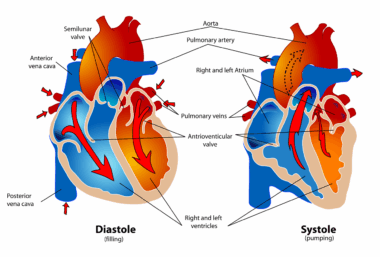Heart Rate Zones: Maximizing Cardiovascular Training Efficiency
Understanding heart rate zones is crucial for anyone looking to enhance their cardiovascular training experience. By monitoring heart rate, individuals can tailor their workouts to maximize efficiency and effectiveness. Heart rate zones are defined as ranges that correspond to various levels of intensity during exercise. These ranges serve different purposes and can be strategically utilized to achieve specific fitness goals, whether for fat loss, endurance, or performance improvement. Typically, there are five heart rate zones, each representing a percentage of an individual’s maximum heart rate. These are: Zone 1 (very light), Zone 2 (light), Zone 3 (moderate), Zone 4 (hard), and Zone 5 (maximum effort). Understanding how to work within these zones can enhance your overall training plan. For example, training in zones 2 and 3 helps develop aerobic endurance, while zones 4 and 5 build speed and power. This knowledge empowers individuals to structure their workouts effectively, ensuring they achieve maximum results while minimizing the risk of overtraining or injury. Additionally, using heart rate monitors can significantly aid in maintaining desired training intensity, thus ensuring efficiency over time.
Implementing heart rate training can significantly enhance motivation and help maintain focus during workouts. Many people often feel uncertain about how hard to push themselves, which can lead to ineffective workouts. By establishing clear heart rate zones, individuals can create objective goals for their training sessions. For example, targeting a specific heart rate zone for a defined period makes it easier to track progress and stay motivated. This approach not only helps in getting results but also provides a sense of accomplishment as training adapts to meet individual fitness levels. By responding to real-time feedback from heart rate monitors during sessions, individuals can fine-tune the intensity to ensure they are getting maximum benefits from their workouts. In addition, understanding how to use heart rate zones aids in structuring varied sessions focused on different objectives. It is possible to create interval workouts that emphasize both strength and cardiovascular abilities. For those seeking variety, incorporating exercises such as intervals or tempo runs into high and low-intensity zones keeps training exciting and beneficial. In this way, engaging in heart rate training leads to the attainment of fitness goals while ensuring enjoyable workouts.
Benefits of Heart Rate Zone Training
Heart rate zone training serves multiple purposes, particularly in cardiovascular workout efficiency. One of the most significant benefits is the ability to target specific fitness goals effectively. For instance, lower heart rate zones primarily focus on fat burning, while higher zones aim for improved cardiovascular endurance and overall athletic performance. By understanding these zones, individuals can tailor their routines based on personal goals, making workouts more effective and enjoyable. Another advantage of heart rate zone training is its adaptability to any fitness level. Beginners might find more benefits by focusing on lower zones initially, as they develop endurance and cardiovascular health. Meanwhile, advanced athletes can push into higher zones to build speed and anaerobic capacity. Furthermore, heart rate training encourages greater attention to recovery, allowing for time spent in recovery zones. Recognizing when recovery is needed helps to prevent burnout and fatigue, ensuring progressive adaptation. Lastly, incorporating heart rate training fosters a greater awareness of one’s body and responses to various intensities, leading to improved long-term health. Overall, utilizing heart rate zones will enhance physical exercise routines while promoting sustainable fitness habits.
Tracking heart rate zones has become more effortless with advancements in technology, particularly through fitness trackers, smartwatches, and mobile applications. These devices allow users to monitor their heart rate conveniently and offer insights into training intensities. With real-time notifications, users can adjust their workouts, ensuring they remain within their desired heart rate zones. Moreover, many devices provide detailed analytics on performance over time, revealing patterns and trends. This data can prove invaluable when creating personalized fitness plans. By reviewing cardiac responses to different exercise methods, individuals can identify which routines yield the most significant benefits and how they can adjust their endeavors accordingly. Users can also set reminders for recovery periods or specific zone training, ultimately improving adherence and motivation. Moreover, the community aspect of many of these apps can enhance motivation through friendly competition. Sharing goals with friends or engaging in challenges fosters a supportive environment that can lead to better performance outcomes. In essence, by leveraging the functionality of these tools, individuals can significantly enhance their training approaches while effectively monitoring their progress and achievements throughout their fitness journey.
The Importance of Warm-Up and Cool Down
Incorporating warm-up and cool-down exercises is crucial for effective cardiovascular training and maximizing heart rate zone benefits. Warming up prepares the body for exercise by gradually increasing heart rate and blood flow, which helps reduce the risk of injuries. It also allows muscles, joints, and connective tissues to become more flexible and ready for exertion. Ideally, a warm-up should last at least 5 to 10 minutes, incorporating dynamic movements that replicate the workout’s intensity. Similarly, cool-down exercises are equally important, allowing the body to transition back to rest gradually. It helps bring heart rates down safely, which is essential for recovery and preventing dizziness or fainting. Cool-downs also aid in removing lactic acid and other metabolic waste products accumulated during exertion, allowing the muscles to recover effectively. Engaging in static stretches post-workout during the cool-down phase is beneficial for overall flexibility and muscle recovery. This combination of warm-up and cool-down routines fosters an effective training session, maximizing the benefits experienced while adhering to heart rate zones during workouts. Ultimately, prioritizing these elements can lead to better fitness outcomes and improved overall health and well-being.
Nutrition also plays a vital role in cardiovascular training and overall fitness, significantly influencing performance and recovery. Proper fueling can enhance workout capacity, enable better heart rate zone training, and optimize recovery post-exercise. Consuming a diet rich in whole foods, including lean proteins, complex carbohydrates, and healthy fats, supports energy needs and maintains stable blood sugar levels. Additionally, timing nutrient intake is essential; pre-workout meals provide energy to perform in higher heart rate zones, while post-workout nutrition aids in muscle recovery. Staying hydrated is equally critical; proper hydration enhances blood circulation and ensures that the heart can perform effectively during intense workouts. Dehydration can lead to increased heart rates and impaired performance, making it more difficult to train within desired zones. Thus, being proactive about nutrition and hydration will ensure individuals experience maximum benefits from their cardiovascular training while maintaining good health. Moreover, seeking the guidance of a nutritionist can provide personalized plans to enhance fitness goals further. By carefully considering these nutrition aspects, individuals can optimize their cardiovascular training efficiently while supporting overall well-being.
Conclusion: Making the Most of Your Training
In conclusion, understanding heart rate zones is essential for maximizing the efficiency of cardiovascular training. By effectively utilizing these zones, individuals can tailor their workouts to achieve specific fitness goals, whether strengthening endurance, enhancing power, or promoting fat loss. The ability to monitor heart rates during exercise facilitates intentional workouts, allowing users to push themselves safely while remaining engaged and motivated. Embracing technology through fitness trackers and apps complements these strategies, providing valuable insights into performance and progress. Additionally, incorporating key elements like warm-ups and cool-downs and maintaining proper nutrition and hydration can elevate training experiences. Ultimately, a well-rounded approach integrating heart rate zone training, effective recovery methods, and nutritional support can lead to long-term success in cardiovascular fitness. By remaining consistent and informed, individuals can not only achieve their desired outcomes but also cultivate healthier lifestyles. Fitness is a journey, and a strategic focus on heart rate zones will ensure maximized results. As you set your training goals, consider how you can implement these strategies to create a rewarding and sustainable fitness program for yourself.
As you work towards your fitness goals, remember to keep things enjoyable by varying your workouts and tracking progress effectively. Engaging in different activities can reduce burnout and help explore new ways to challenge your cardiovascular endurance. Consider swimming, cycling, HIIT (High-Intensity Interval Training), or dancing as complementary additions to enhance heart rate zone training. Not only can this variety lead to improved fitness levels, but it makes the process much more enjoyable. Set specific, achievable goals for each month, ensuring that you monitor your progress closely. By recognizing improvements over time, whether in speed or the ability to maintain a higher heart rate for more extended periods, you’ll stay motivated to pursue further success. Additionally, consider joining group classes or clubs focused on cardiovascular training, as they introduce a social aspect that can be incredibly motivating. Accountability to peers can push you further than working out alone. By embracing these suggestions, you will create an engaging environment where your cardiovascular training promotes not only physical fitness but an enjoyable lifestyle as well. A multifaceted approach will yield the best results and keep your fitness journey exciting and fulfilling.





